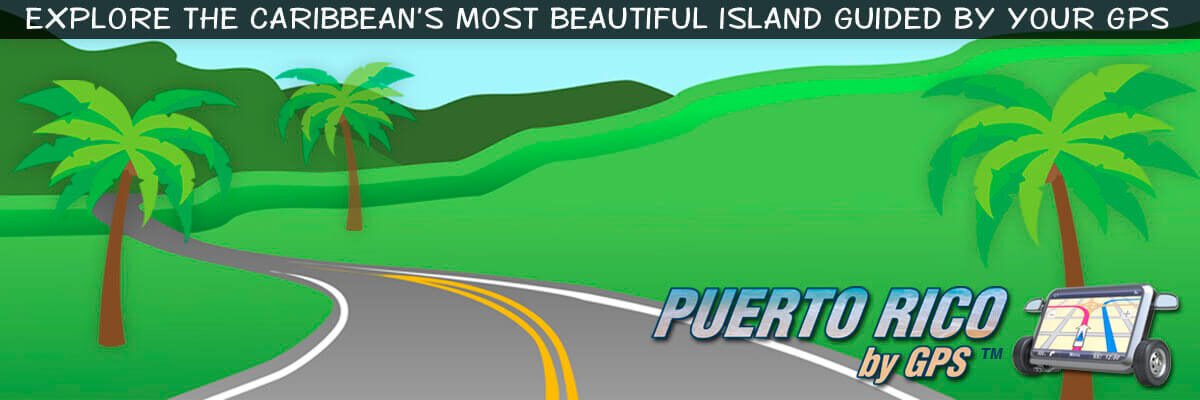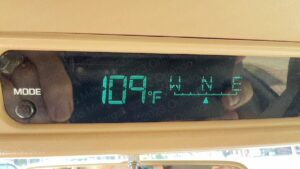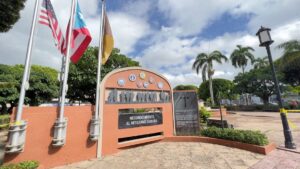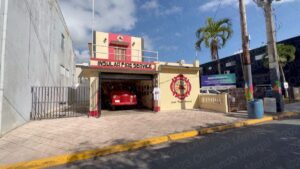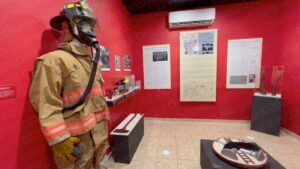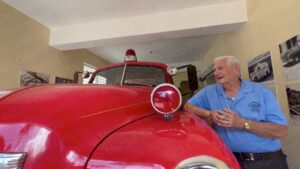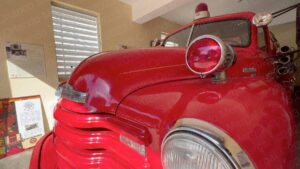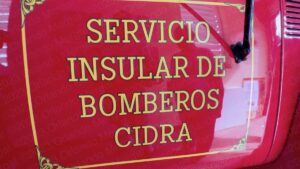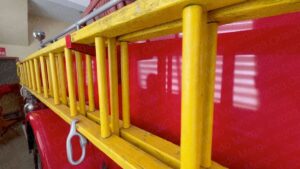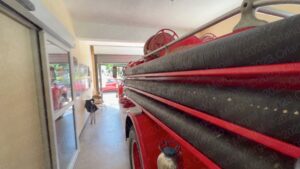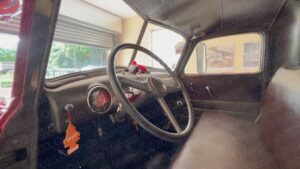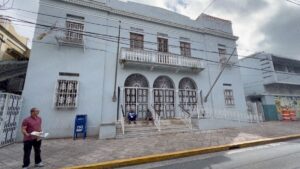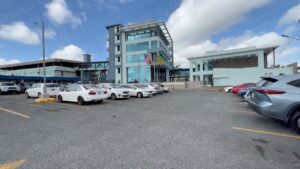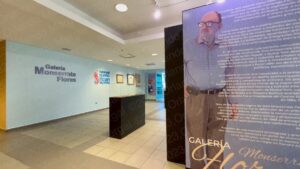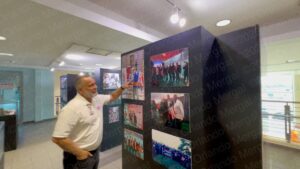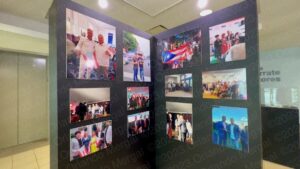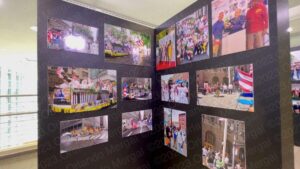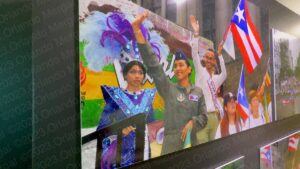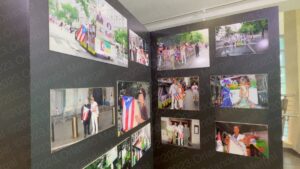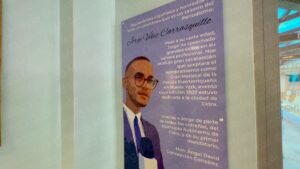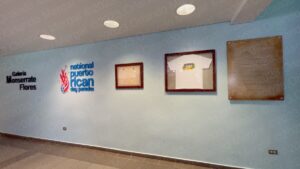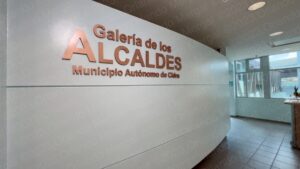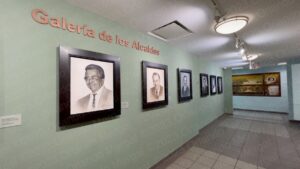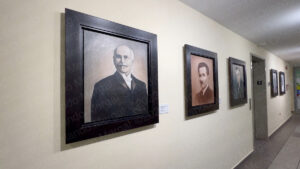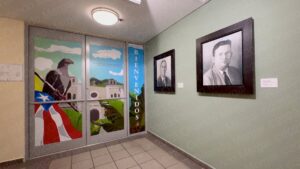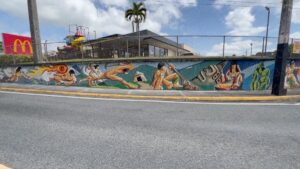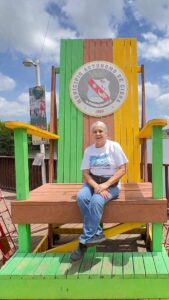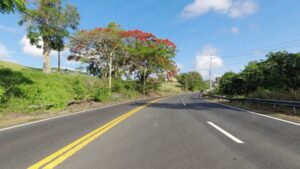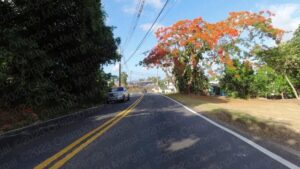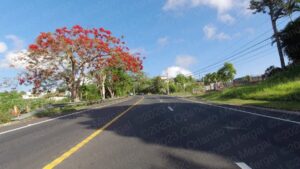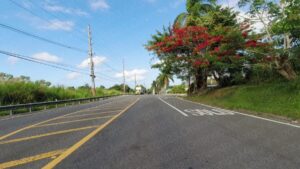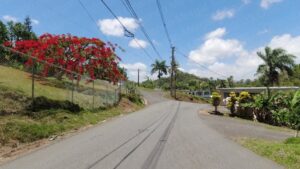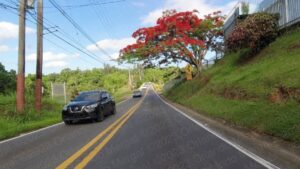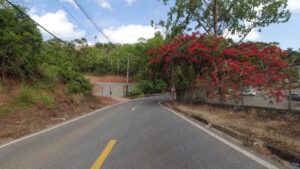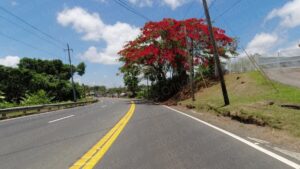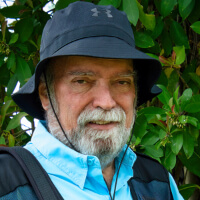Global warming has become a real problem. You can hardly turn on the news without learning about a place that’s burning up. And Puerto Rico is no exception. Just recently we’ve had several weeks with temperatures exceeding 100°F. Thankfully, that’s not the case in Cidra, Puerto Rico.
At 1,417 feet above sea level, temperatures in Cidra are usually several degrees below those of the San Juan Metroplex. Don’t get me wrong. It’s not like you’ll need a coat. But temperature is a lot more tolerable than at the coast.
Cidra is also beautiful. Along with the cooler temperatures comes lush vegetation, a beautiful lake (albeit man-made), and jaw dropping landscapes all around.
My wife Zoraida and I have been visiting every town in Puerto Rico at a rate of two towns per month. The idea is to produce a video for each town plus one or more blog posts during a period of two to three years. That’s right, there’s 78 towns (or municipalities) in Puerto Rico. So at a rate of 24 per year it will take us 39 months.
That’s without counting any health problems that might come along, vacations or the ocasional week when we might not feel like going out altogether.
Then there’s the element of just enjoying our Island and getting out of the house. After all, people pay premium prices to visit our Island paradise and we have it all for free!!!
So this time we jumped in our Pathfinder and headed for the little town of Cidra.

When we got there it was 8:24 in the morning. We’ve learned that, if we want to catch the Catholic churches open, we have to arrive well before 9:00am. Most of them celebrate an early mass and then close until the afternoon. During my childhood I remember that most churches remained open all day. You could walk right in, say a prayer and walk back out.
Most of the time there was no one there. But times have changed. Crime and vandalism have forced church management to take more severe measures. And since they don’t have the funds to have people just watching after the facilities all day long, they just close altogether.
Hence, if you want to catch them open, you have to get up early. And, to be frank, even that doesn’t work sometimes, because once the mass is over sometimes they’ll rush you out just to close the temple.
And why is this? Well, you have to understand that parishioners see the church is a place for worship. For tourists it mostly holds architectural and historical significance. So the two viewpoints don’t always meet.
In any case when we got to the “Parroquia de Nuestra Señora del Carmen” (that’s the Nuestra Señora del Carmen Parish) they were celebrating a prayer service. So it wasn’t like we could walk in and shoot video to our heart’s content. Even so I was able to film a couple of shots in a respectful manner and walk out of the temple silently.The Nuestra Señora del Carmen Parish is a smaller temple, when compared to others on the Island, but it’s beautiful and well kept. It sits on the east side of the Francisco M. Zeno Square, a rather large plaza, with dozens of trees and benches, that’s very inviting.
Sadly, the square was being power washed when we got there and the workers told us that it would probably take until 2:00 or 3:00 in the afternoon. Hence, there was yellow tape all around it and the beautiful water fountain in the center was shut off.
Close to the church, on the south side of the square, there’s a small monument to the town’s veterans. That too had yellow ribbons blocking it off, but with a tight crop I was able to get a nice shot of it.
Years ago I learned that in photography (as well as in video) the only thing that’s important is what’s in the shot. For example, a few years ago I visited the northeastern United States to shoot the fall color. However, that year the colors weren’t as vibrant as I would’ve liked. So we had a hard time finding those magnificent landscapes that we all dream about.
In spite of having a rather mundane fall, I came out with great pictures. In fact, anyone that saw my shots thought the colors had been outstanding. Why? Because the only trees that mattered to me were the ones in the picture.
So, back to the veteran’s monument. There was a yellow ribbon to the left of it, two men with power washers and a wet sidewalk. But you see none of that in my picture. Why? Because it’s all about what you show and what you leave out.
As for the workers, it’s a tricky proposition. If you arrive in town early, to catch the church open, you often run into city workers power washing the plazas and sidewalks. If you arrive later, everything’s clean but the church is closed.
In the case of Cidra we were lucky to have the church open. And guess what? If it weren’t for the workers the city wouldn’t be as nice as it is. So it’s a matter of navigating these two realities.
As we walked west along the edge of the plaza we discovered a small Firehouse Museum dedicated to Cidra’s first firefighter: “José Pepe Álvarez”. It’s a small museum, by any standard, but it’s filled to the rafters with pictures, information and memorabilia of Island’s firefighting heroes.
- Facade
(click on image to see it larger)
- Memorabilia
(click on image to see it larger)
- Volunteer
(click on image to see it larger)
- Fire Truck
(click on image to see it larger)
- Fire Truck
(click on image to see it larger)
- Fire Truck
(click on image to see it larger)
- Fire Truck
(click on image to see it larger)
- Fire Truck
(click on image to see it larger)
There’s even an original 1934 fire truck that’s so well preserved that it seems like you could probably drive it to the next fire.
But the best thing about this tiny museum were the attendants. They took us through every picture, every exhibit and every piece of memorabilia and explained them in great detail.
After leaving the Fireman’s Museum we walked north along the square, turned right and found the old City Hall building on our left hand side. Right now it’s closed, but we were told later on, at the new City Hall building, that city officials are planning to reopen it as the Cidra Museum of History.
Even though the old City Hall building was closed, I must say that there’s hardly any businesses boarded up, any graffiti or urban blight in Cidra. Another thing that we didn’t see where homeless people. I can’t affirm that there aren’t any, I can just say that I didn’t see any.
As we passed the Old City Hall building, we walked a little further down the street, turned left on “Padilla El Caribe” Street, right on Antonio R. Barceló and found the new City Hall building at the end of the street. To the eye it looks brand new, but later on I was told that it’s actually 15 years old. There too there were city workers power washing the sidewalks.
One of the things that I learned earlier at the Firemen’s Museum was about a great exhibition that the city had on the second level of the new City Hall building. They didn’t tell us what it was about, but they said it was great.
Hence, that was my opening line when we arrived at the reception area of the New City Hall building: “I’ve been told that there’s a great exhibit on the second level of this building”. The attendant smiled and led us up to a wonderfull exhibition area honoring Mr. Monserrate Flores, the “cidreño” that created and nurtured the Annual Puerto Rican Day Parade in New York.
- Puerto Rican Day Parade Exhibit
(click on image to see it larger)
- Puerto Rican Day Parade Exhibit
(click on image to see it larger)
- Puerto Rican Day Parade Exhibit
(click on image to see it larger)
- Puerto Rican Day Parade Exhibit
(click on image to see it larger)
- Puerto Rican Day Parade Exhibit
(click on image to see it larger)
- Puerto Rican Day Parade Exhibit
(click on image to see it larger)
- Puerto Rican Day Parade Exhibit
(click on image to see it larger)
- Puerto Rican Day Parade Exhibit
(click on image to see it larger)
The Annual Puerto Rican Day Parade is the largest celebration of cultural pride in the United States. It takes place on the second Sunday of June along Fifth Avenue in Manhattan, New York. There are 3.2 million Puerto Ricans in New York, making it the largest concentration outside the Island.
Although the New York parade is the largest, it has inspired similar events in other cities with large Puerto Rican populations such as: Chicago, Philadelphia, Chicago and Orlando. And while the event includes a parade, typical of Anglo Saxon countries, it is mainly inspired on the popular “Fiestas Patronales” that are celebrated yearly in every Puerto Rican municipality.
On the third floor of the new City Hall building there’s another gallery honoring the town’s mayors. Like other towns in Puerto Rico the one thing that caught my eye was that they were all male. In fact, I stand corrected. There was one female that occupied the post briefly after the prior mayor was forced to abandon his position. Shortly after she was replaced with another male.
- Cidra Mayor’s Gallery
(click on image to see it larger)
- Cidra Mayor’s Gallery
(click on image to see it larger)
- Cidra Mayor’s Gallery
(click on image to see it larger)
- Cidra Mayor’s Gallery
(click on image to see it larger)
After viewing the third floor exhibition we were left in the care of Mrs. Paola Peña and Mr. Angel H. Rivera, at the town’s press office, where we spent almost an additional hour. Mrs Peña provided us with printed materials and additional information about this wonderful town.
I also learned that the “new City Hall” building isn’t so new after all. It just looks new, but it’s actually 15 years old.
After leaving City Hall we walked back to our car and headed towards the “Presencia e Identidad Public Art Project”. It’s a huge mosaic mural, made of tile, that was created by dozens of artists, municipal workers and volunteers and financed by Caribbean Refrescos (holders of the Coca Cola franchise on the Island) and McDonald’s Restaurants.
I can only imagine the amount of people that must have participated on this project and the amount of time that it must have taken to complete. The piece is huge, taking an entire corner around a McDonald’s restaurant. But the pieces are also tiny.
The “Presencia e Identidad Public Art Project” is truly a masterpiece and a testament to what different segments of society can accomplish when they join forces and put their minds to it.
In the video I say that our last stop was at Hacienda Sabanera, but that’s not actually true. Before heading for Hacienda Sabanera we we went by the original bridge that used to connect Cidra along road 172. You can catch an excellent view of the lake from there and there’s even one of those giant chairs that have become so popular lately.After that we finally headed for Hacienda Sabanera. It’s a huge recreational property northeast of town presently being developed by the town of Cidra. And before you ask, no, it never was an actual hacienda. They just call it that way to honor the “sabanera pigeon” that’s endemic to Cidra.
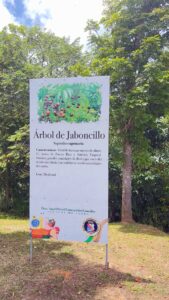
Hacienda Sabanera actually has signage that lets you know what you’re looking at. Other facilities on the Island should take a hint.
One of the first things that caught my attention was the signage. There are actually signs that tell you what kinds of trees you’re looking at. Maybe the people at the Willie Miranda Marín “Botanical” Garden in Caguas could take a hint.
Hacienda Sabanera has walking trails, gazebos, barbecue facilities, fishing areas and even docks where you can launch a kayak. And if I had to point out the one thing that caught my attention the most it would be the silence. I could hear myself thinking. In fact, the loudest noises at Hacienda Sabanera are the birds chirping, the wind blowing and the lake’s water bubbling against the shoreline.
Just so you know, Puerto Rico doesn’t have any natural lakes. Every lake on the Island is actually a water reservoir created for human consumption. However, they’re the perfect place to bring your favorite book and relax.On the way out from Hacienda Sabanera we went the wrong way. Or maybe not. It all depends who you ask. When we got to State Road 173 we turned right towards Sabanera Ward, that’s “Barrio Sabanera” in the tongue of Cervantes.
Going west would’ve taken us back to town where we would’ve taken State Road 172 out of town and back to Toll Road 52. Turning right also took us to State Road 172 (eventually), but not without going through dozens of curves across Certenejas Ward.
Don’t get me wrong. It’s a beautiful area. But it’s easy to get lost, especially if you’re from out of town.

However, like they say: “every cloud has a silver lining”. The “Apple Maps” lady kept saying “certeneges” instead of Certenejas. I always get a kick out of her pronunciation of Puerto Rican names and places.
Eventually (very eventually) we reached State Road 172, turned left, got to Toll Road 52 and back to the San Juan Metroplex.
But there’s one thing that I left out on purpose just to create am “open loop” (that’s a fancy name for an unanswered question or unfulfilled promise). You know those beautiful orange colored trees that you saw throughout my video and in the photos in this post? They’re called “flamboyanes” (in the plural sense) and “flamboyán” in the singular.
- Flamboyán, they’re everywhere!!!
(click on image to see it larger)
- Flamboyán, they’re everywhere!!!
(click on image to see it larger)
- Flamboyán, they’re everywhere!!!
(click on image to see it larger)
- Flamboyán, they’re everywhere!!!
(click on image to see it larger)
- Flamboyán, they’re everywhere!!!
(click on image to see it larger)
- Flamboyán, they’re everywhere!!!
(click on image to see it larger)
- Flamboyán, they’re everywhere!!!
(click on image to see it larger)
- Flamboyán, they’re everywhere!!!
(click on image to see it larger)
They’re indigenous to the island nation of Madascar and where planted in many tropical regions around the world, including Puerto Rico, during the Spanish conquest. There real name is “flame tree” or “Royal Poinciana”.
But ask any Puerto Rican and he’ll say: “yeah, that’s a flamboyán and it’s a native tree”. I guess they’ve been here so long that they’re already part of our reality. So are the palm trees, that actually came from Africa during the 16th century.
NOTE: Due to the large extension of land covered in this post, you will need to zoom in and out on the map to see every pin. Please pardon the inconvenience.
Cidra was a great town that made quite an impression on us. So much so that we expect to return soon to do some landscape photography. We’ll probably do that by the end of June when we cover the Aibonito Flower Festival.
See you next time,
©2023,Orlando Mergal, MA
____________________
Bilingual Content Creator, Blogger, Podcaster,
Author, Photographer and New Media Expert
Tel. 787–750-0000, Mobile 787–306-1590
